
Paleontologist Sebastian Apesteguia measures the footprint made by a meat-eating predator some 80 million years ago and one of the largest of its kind ever found, at the Maragua Syncline, Bolivia, July 21, 2016. The print, which measures 1.2 meters (1.3 yards) across, probably belonged to the abelisaurus, a biped dinosaur that once roamed South America, said Argentine paleontologist Sebastian Apesteguia, who is studying the find. (Photo by David Mercado/Reuters)
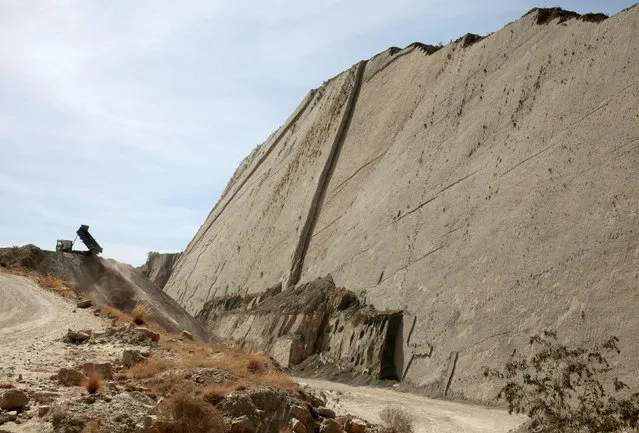
A truck unloads rocks next to the Cal Orko cliff where thousands of dinosaur's footprints can be seen, in Cal Orcko, on the outskirts of Sucre, Bolivia, July 22, 2016. (Photo by David Mercado/Reuters)
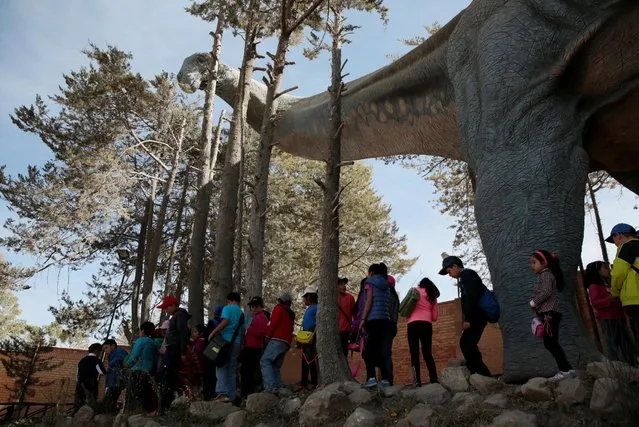
Visitors walk underneath a replica of a Titanosaur at the Cretaceous park in Cal Orcko, on the outskirts of Sucre, Bolivia, July 22, 2016. (Photo by David Mercado/Reuters)
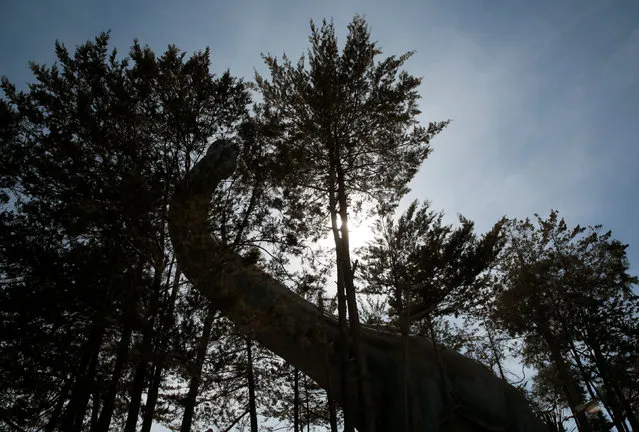
The replica of a Titanosaur is seen at the Cretaceous park in Cal Orcko, on the outskirts of Sucre, Bolivia, July 22, 2016. (Photo by David Mercado/Reuters)
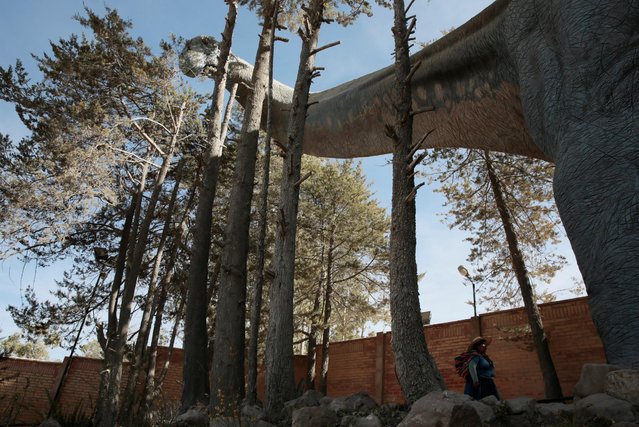
A visitor walks underneath a replica of a Titanosaur at the Cretaceous park in Cal Orcko, on the outskirts of Sucre, Bolivia, July 22, 2016. (Photo by David Mercado/Reuters)
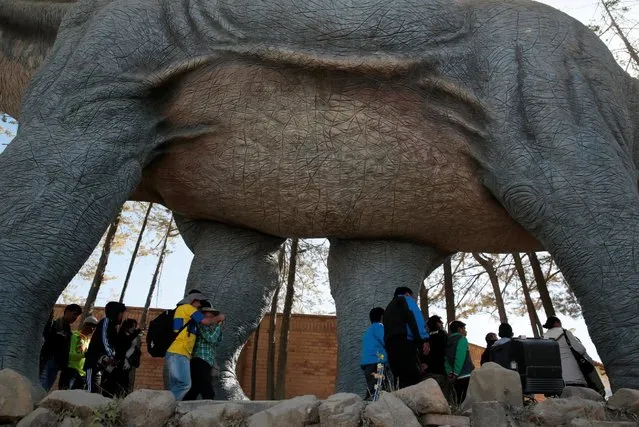
Visitors walk underneath a replica of a Titanosaur at the Cretaceous park in Cal Orcko, on the outskirts of Sucre, Bolivia, July 22, 2016. (Photo by David Mercado/Reuters)
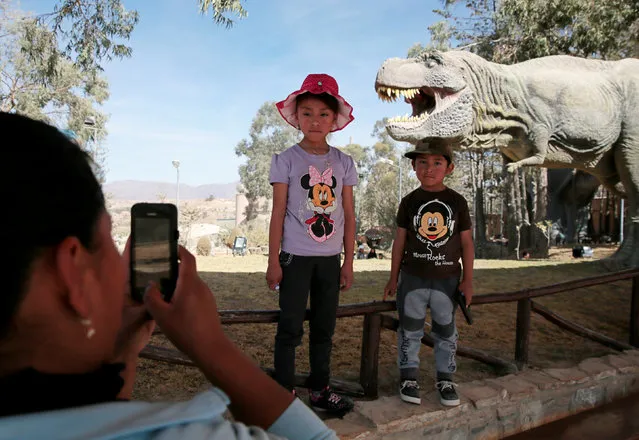
A mother takes a photograph of her children while they pose in front of the replica of a Tyrannosaurus rex at the Cretaceous park in Cal Orcko, on the outskirts of Sucre, Bolivia, July 22, 2016. (Photo by David Mercado/Reuters)
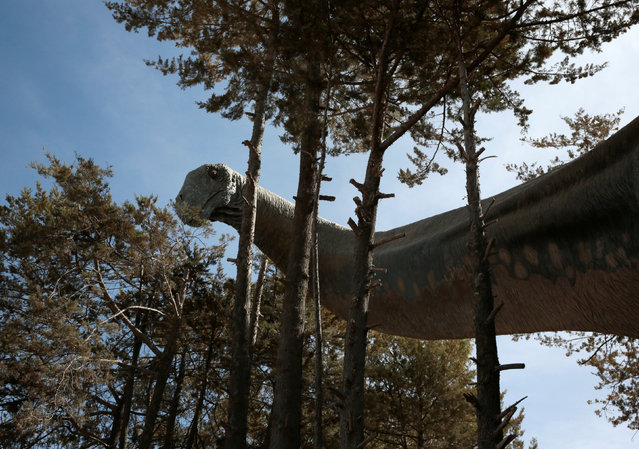
The replica of a Titanosaur is seen at the Cretaceous park in Cal Orcko, on the outskirts of Sucre, Bolivia, July 22, 2016. (Photo by David Mercado/Reuters)
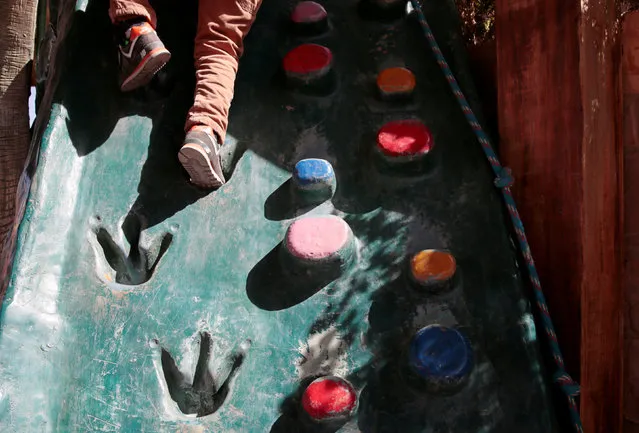
A child walks up a playground climber with dinosaur footprints at the Cretaceous park in Cal Orcko, on the outskirts of Sucre, Bolivia, July 22, 2016. (Photo by David Mercado/Reuters)

Children have a snack while sitting next to the replica of a Tyrannosaurus rex at the Cretaceous park in Cal Orcko, on the outskirts of Sucre, Bolivia, July 22, 2016. (Photo by David Mercado/Reuters)
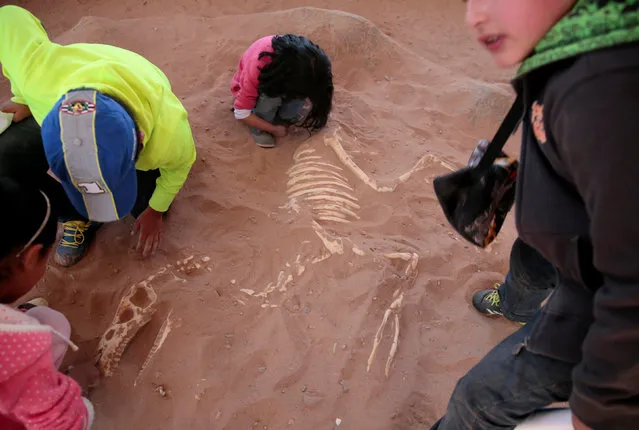
Children play with the replica of a dinosaur fossil at the Cretaceous park in Cal Orcko, on the outskirts of Sucre, Bolivia, July 22, 2016. (Photo by David Mercado/Reuters)
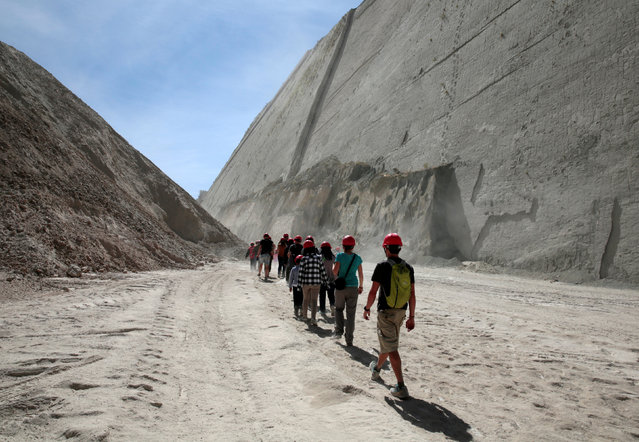
Visitors arrive at the Cal Orcko cliff which is covered with thousands of dinosaur's footprints in Cal Orcko, on the outskirts of Sucre, Bolivia, July 22, 2016. (Photo by David Mercado/Reuters)
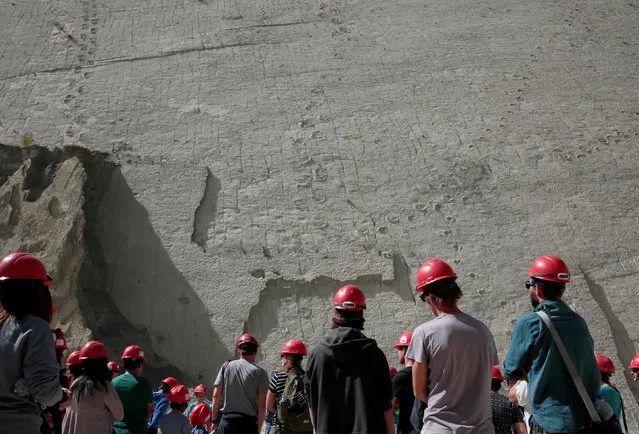
Visitors look at dinosaur footprints while visiting the Cal Orcko cliff in Cal Orcko, on the outskirts of Sucre, Bolivia, July 22, 2016. (Photo by David Mercado/Reuters)
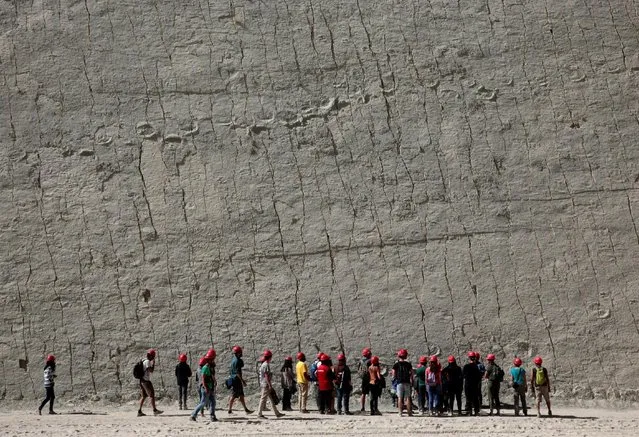
Visitors look at dinosaur footprints while visiting the Cal Orcko cliff in Cal Orcko, on the outskirts of Sucre, Bolivia, July 22, 2016. (Photo by David Mercado/Reuters)
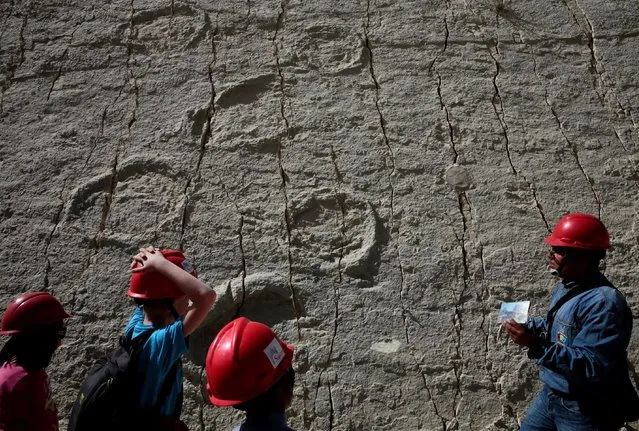
Visitors look at dinosaur footprints while visiting with a tour guide the Cal Orcko cliff in Cal Orcko, on the outskirts of Sucre, Bolivia, July 22, 2016. (Photo by David Mercado/Reuters)
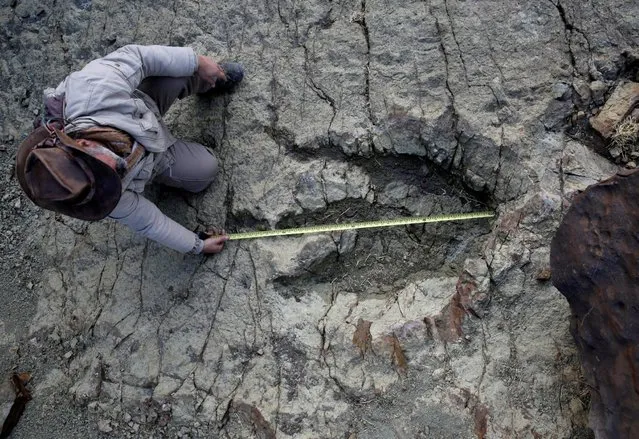
Paleontologist Sebastian Apesteguia measures the footprint made by a meat-eating predator some 80 million years ago and one of the largest of its kind ever found, at the Maragua Syncline, Bolivia, July 21, 2016. (Photo by David Mercado/Reuters)
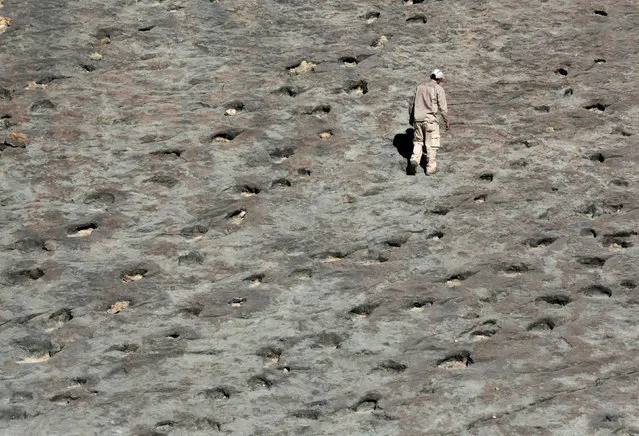
A man walks next to dinosaur footprints at the Maragua Syncline, Bolivia, July 21, 2016. (Photo by David Mercado/Reuters)
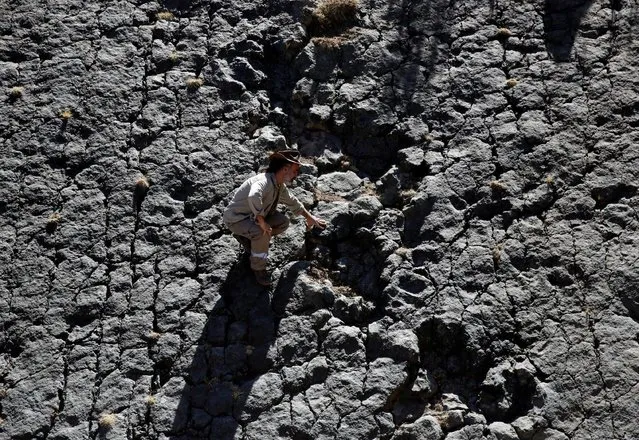
Paleontologist Sebastian Apesteguia touches a dinosaur's footprint at the Maragua Syncline, Bolivia, July 20, 2016. (Photo by David Mercado/Reuters)
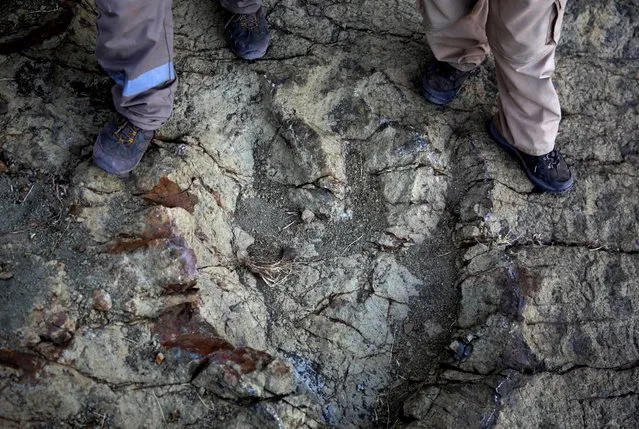
People stand next to a footprint made by a meat-eating predator some 80 million years ago and one of the largest of its kind ever found, at the Maragua Syncline, Bolivia, July 20, 2016. (Photo by David Mercado/Reuters)
28 Jul 2016 13:32:00,
post received
0 comments
